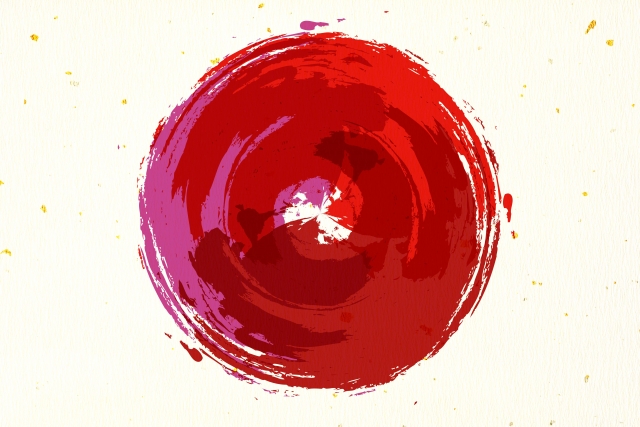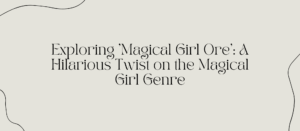Introduction to ‘Happy Sugar Life’

Dive into the unsettling yet captivating world of “Happy Sugar Life,” where the seemingly sweet aesthetic conceals a gripping psychological thriller. This anime centers around Satou Matsuzaka, whose encounter with the innocent Shio Koube triggers an intense and dangerous obsession, redefining her concept of love.
The Disturbing Premise of ‘Happy Sugar Life’ “Happy Sugar Life” presents a unique and disturbing narrative that explores the darkest corners of human emotions. Satou Matsuzaka, a seemingly normal high school girl, lives a dual life. To the outside world, she appears caring and charismatic, but beneath this facade, she harbors a dark secret: her so-called ‘happy sugar life’ with Shio Koube, a young girl who becomes the center of her world. Satou’s love for Shio is intense and possessive, leading her to extreme measures to maintain the semblance of a blissful life together.
The anime delves into how Satou’s attachment to Shio escalates into a series of manipulative and sinister actions. Her willingness to protect their shared life at any cost creates a tense atmosphere that keeps viewers on edge. As Satou navigates through her day-to-day activities, the psychological strain of her secrets threatens to unravel her meticulously crafted life.
Aesthetic Contrasts and Psychological Depth One of the most striking aspects of “Happy Sugar Life” is its aesthetic. The series employs a bright and colorful palette that contrasts sharply with the dark themes of obsession, captivity, and moral corruption. This juxtaposition creates a disconcerting effect that enhances the psychological impact of the story. The cute visuals paired with the horrifying actions of the characters serve to unsettle the viewer, making the descent into the narrative’s dark themes even more compelling.
The anime not only explores the extremes of what one might do for love but also prompts viewers to question the boundaries between right and wrong. Satou’s complex character and her interactions with other characters, who each reveal their own twisted desires and secrets, weave a complex web of stories that challenge conventional moral judgments.
Engaging Viewers with Deep Themes “Happy Sugar Life” is more than just a story of love and obsession; it is a psychological exploration into how the need for affection and acceptance can drive individuals to profound extremes. The series tackles heavy themes such as the nature of true love, the quest for happiness, and the lengths to which one might go to achieve personal fulfillment.
In conclusion, “Happy Sugar Life” offers a unique blend of cute aesthetics and dark psychological themes, making it a standout anime in the psychological thriller genre. Its ability to maintain a facade of innocence while gradually revealing a chilling narrative attracts a wide range of viewers, from those who appreciate complex character studies to those fascinated by the psychological underpinnings of love and obsession. Whether you’re drawn to its striking visuals or its compelling storytelling, “Happy Sugar Life” is an unforgettable series that will leave you questioning the true meaning of happiness.
Character Analysis

Delve into the complex and chilling world of “Happy Sugar Life” through a detailed character analysis that explores the intricate psyche of Satou Matsuzaka and introduces other pivotal characters like Shio Koube. This exploration sheds light on their motivations and the dark roles they play in the unsettling narrative of love and obsession.
Satou Matsuzaka: A Portrait of Obsession Satou Matsuzaka, the protagonist of “Happy Sugar Life,” is a character study in extremes. Outwardly charming and seemingly normal, Satou harbors a deep, obsessive love for Shio Koube, a young girl who represents her ideal of pure, untainted love. Satou’s perception of love is skewed by her past traumas and the lack of genuine affection in her life, leading her to construct a facade of a perfect life with Shio at any cost. Her actions, driven by a possessive need to maintain this illusion, spiral into increasingly dark and manipulative behaviors, making her a complex character caught between vulnerability and monstrosity.
Satou’s character is a paradox, showcasing tender care for Shio while simultaneously displaying a ruthless streak towards anyone who threatens their ‘happy sugar life.’ Her psychological depth is revealed through her interactions, where her facade slips, and viewers glimpse the turmoil and desperation driving her actions. This duality makes Satou a fascinating subject of psychological analysis, as her actions raise questions about the nature of love and the ethical boundaries she crosses.
Shio Koube: Innocence Amidst Darkness Shio Koube serves as the counterbalance to Satou’s dark obsessions. Representing innocence and purity, Shio is the center of Satou’s world, yet her own backstory is marked by tragedy and neglect. Shio’s dependence on Satou for love and protection adds layers to her character, highlighting themes of dependency and innocence lost. Her presence in the story is pivotal, as it not only drives Satou’s actions but also mirrors the lost innocence of each character who interacts with her.
Shio’s simplistic view of the world and her interactions with Satou provide a stark contrast to the dark themes surrounding them. Her character evokes sympathy and raises questions about the impact of trauma on young minds, making her a crucial element in understanding the psychological underpinnings of the narrative.
Supporting Cast: Enhancing the Narrative “Happy Sugar Life” also features a supporting cast that each adds depth to the story, from their own twisted desires to their interactions with Satou and Shio. Characters like Asahi Kobe, Shio’s older brother, who is desperately searching for her, introduce additional themes of familial love and redemption. Each character’s backstory and motivations are intricately woven into the main narrative, enhancing the overarching themes of love, obsession, and moral decay.
The dynamics among these characters create a web of interactions that drive the story forward, providing a broader context to Satou and Shio’s relationship and highlighting the different facets of love and obsession portrayed in the series.
Conclusion In “Happy Sugar Life,” each character plays a crucial role in unfolding the narrative, driven by their complex psyches and dark motivations. This character analysis not only offers insights into their roles but also delves into the psychological themes that make the anime a compelling study of the darker aspects of human emotions. Through Satou, Shio, and the ensemble cast, “Happy Sugar Life” challenges viewers to question the nature of love and the ethical limits of human behavior, making it a standout psychological thriller in the anime genre.
Themes and Motifs

“Happy Sugar Life” is a gripping anime that delves deep into the complexities of love and obsession, using a blend of disturbing visuals and narrative techniques to explore and enhance these themes. This analysis examines how the anime portrays the dark side of human emotions and societal norms, making it a standout psychological thriller.
Exploring the Nature of Love and Obsession At the core of “Happy Sugar Life” is the exploration of love, portrayed not as a simple affectionate feeling but as an intense, consuming obsession. Satou Matsuzaka, the protagonist, represents this twisted version of love through her relationship with Shio Koube. Her love, which she perceives as pure and protective, is actually a possessive obsession that drives her to commit extreme acts. The anime challenges viewers to consider the boundaries of love and the destructive power it can wield when it turns into obsession. This theme is intricately explored through the contrasting interactions between characters, each adding their perspective on what love means to them.
Manipulation and Control Manipulation is another significant theme in “Happy Sugar Life,” illustrated through the characters’ interactions and the power dynamics at play. Satou’s ability to manipulate those around her to maintain her life with Shio is a central focus. The series delves into how manipulation can be masked as care or love, questioning the ethical limits of influence over others. The characters often use emotional manipulation to achieve their desires, reflecting the darker aspects of human nature and highlighting the consequences of such actions.
Confronting Societal Norms “Happy Sugar Life” also critiques societal norms, particularly how society deals with issues of mental health, loneliness, and the idealization of purity and innocence. Through its characters, the anime exposes the underbelly of societal expectations and the isolation that can come from not fitting into prescribed roles. The series provokes thought about the pressure to conform and the lengths to which individuals will go to protect their personal ideals and relationships.
Disturbing Visuals and Narrative Techniques The use of disturbing visuals is a key narrative technique in “Happy Sugar Life.” The bright, often cute aesthetics juxtaposed with dark, shocking scenes create a disconcerting contrast that intensifies the psychological impact of the story. This visual style mirrors the duality of the characters’ lives—outwardly normal yet internally twisted. Additionally, the pacing and structure of the narrative, which carefully reveals the characters’ pasts and true natures, serve to gradually increase the tension and horror, drawing viewers deeper into the unsettling world of the anime.
Enhancing Themes Through Storytelling “Happy Sugar Life” uses these visuals and narrative strategies effectively to enhance its exploration of themes. The unsettling atmosphere created by the art style, combined with the depth of character development and the slow unraveling of the plot, ensures that the themes of love, manipulation, and societal critique are not only presented but felt deeply by the audience. This method of storytelling invites viewers to engage critically with the content, challenging their perceptions and stirring a dialogue about the often-taboo aspects of affection, control, and societal expectation.
In conclusion, “Happy Sugar Life” is a profound exploration of the darker aspects of love and society, effectively using its narrative and aesthetic choices to challenge and engage viewers. It stands as a significant work within the psychological thriller genre, offering not only entertainment but also deep, unsettling reflections on human behavior and societal norms.
Plot Dynamics and Twists

Happy Sugar Life” masterfully weaves a complex tapestry of psychological thrills and chilling narrative twists, captivating viewers with its intense plot progression and dramatic character development. This analysis delves into how the anime’s plot builds tension and unveils shocking revelations, focusing on key episodes that are essential for understanding the story’s deeper themes and character dynamics.
Building Tension and Crafting Twists The narrative of “Happy Sugar Life” is structured to gradually build tension, creating an atmosphere of suspense that keeps viewers on the edge of their seats. The story unfolds through the eyes of Satou Matsuzaka, a seemingly sweet girl harboring dark secrets. As the plot progresses, the layers of her life and the disturbing nature of her relationship with Shio Koube are revealed. Each episode peels back another layer of the complex relationships and motivations driving the characters, leading to increasingly intense and unexpected plot twists that challenge viewer perceptions of love and morality.
The tension in the series is amplified by the constant threat of Satou’s secrets being exposed. This looming danger is a critical element that propels the narrative forward, as Satou takes drastic measures to maintain her facade of a perfect life with Shio. The suspense is masterfully handled, with each episode contributing to a growing sense of dread and anticipation, culminating in pivotal moments that are both shocking and revealing.
Key Episodes for Story and Character Development Certain episodes of “Happy Sugar Life” are particularly crucial for understanding the evolution of the plot and characters. For instance, early episodes introduce the seemingly idyllic relationship between Satou and Shio but soon begin to hint at the darkness lurking beneath. These episodes are essential for setting the stage and establishing the central themes of the series.
Mid-series episodes are pivotal as they begin to reveal the backstory of Satou and other key characters like Asahi Kobe, Shio’s brother, who is desperately searching for her. These episodes explore the characters’ pasts, providing context for their current actions and motivations. The revelations in these episodes add depth to the characters and serve to explain the complexities of their personalities and choices.
The final episodes are critical as they bring all the narrative threads together, leading to a climax that is both explosive and emotionally charged. These episodes resolve the tension built throughout the series, delivering satisfying conclusions to the characters’ arcs and the overall story. The resolution is marked by significant twists that not only surprise but also provoke thought about the nature of human relationships and the consequences of our actions.
Conclusion “Happy Sugar Life” is a psychological thriller that expertly uses plot dynamics and unexpected twists to engage viewers deeply. The careful pacing and strategic placement of key episodes allow for a full exploration of complex themes such as obsession, manipulation, and the search for love. By highlighting crucial episodes and discussing the overarching narrative structure, this analysis offers insights into how “Happy Sugar Life” crafts a compelling and disturbing tale that resonates with viewers long after the series concludes.
Impact and Reception

“Happy Sugar Life” has stirred considerable discussion among audiences and critics alike, gaining recognition for its intense psychological themes and controversial narrative elements. This analysis delves into how the anime has been received, its psychological impact on viewers, and its distinctive position within the psychological thriller genre.
Audience and Critical Reception “Happy Sugar Life” challenges viewers with its unsettling blend of cute aesthetics and dark psychological themes, creating a divisive reception. On one hand, fans praise the anime for its bold storytelling and the depth of its character exploration, particularly appreciating how it delves into complex issues such as love, obsession, and morality. The character of Satou Matsuzaka, with her twisted perception of love and protection, has been particularly noted for adding a disturbing yet fascinating layer to the narrative.
Critics, however, have had mixed reactions. While some acclaim the series for its unflinching portrayal of dark psychological themes and its ability to keep viewers engaged through suspenseful storytelling, others have critiqued it for the same reasons, pointing out the potentially distressing nature of its content. The portrayal of relationships, especially the manipulative and obsessive elements, has sparked discussions about the limits of depiction in anime.
Psychological Impact and Controversial Aspects The psychological impact of “Happy Sugar Life” is profound. The series does not shy away from discomforting the viewer, using its narrative and visual contrasts to evoke a strong emotional response. This method has been effective in highlighting the dangers of obsession and the darker sides of human desire. The controversial aspects of the show, including its explicit scenes and the moral ambiguity of the characters’ actions, have prompted viewers to question not just the characters’ decisions but also their own perspectives on right and wrong.
Place Within the Psychological Thriller Genre “Happy Sugar Life” occupies a unique place in the psychological thriller genre. It pushes the boundaries of traditional anime storytelling, combining elements of horror, drama, and romance in a way that is rarely seen in the medium. Its approach to storytelling, characterized by a blend of shock and subtlety, has influenced how psychological thrillers can be portrayed in anime, paving the way for future series to explore complex psychological themes with a similar boldness.
The series has also contributed to discussions about the portrayal of psychological health and trauma in media. By presenting its characters’ psychological complexities without definitive judgments, “Happy Sugar Life” encourages a nuanced discussion about mental health issues, making it a significant addition to the genre.
Conclusion “Happy Sugar Life” stands out as a polarizing yet impactful series within the psychological thriller genre. Its reception reflects a wide range of viewer sensitivities and critical perspectives, underscoring the series’ success in engaging audiences on deep emotional and intellectual levels. By pushing the envelope on controversial themes and exploring the psyche’s dark recesses, “Happy Sugar Life” has left an indelible mark on anime storytelling, challenging both creators and audiences to confront uncomfortable truths about the human condition.








